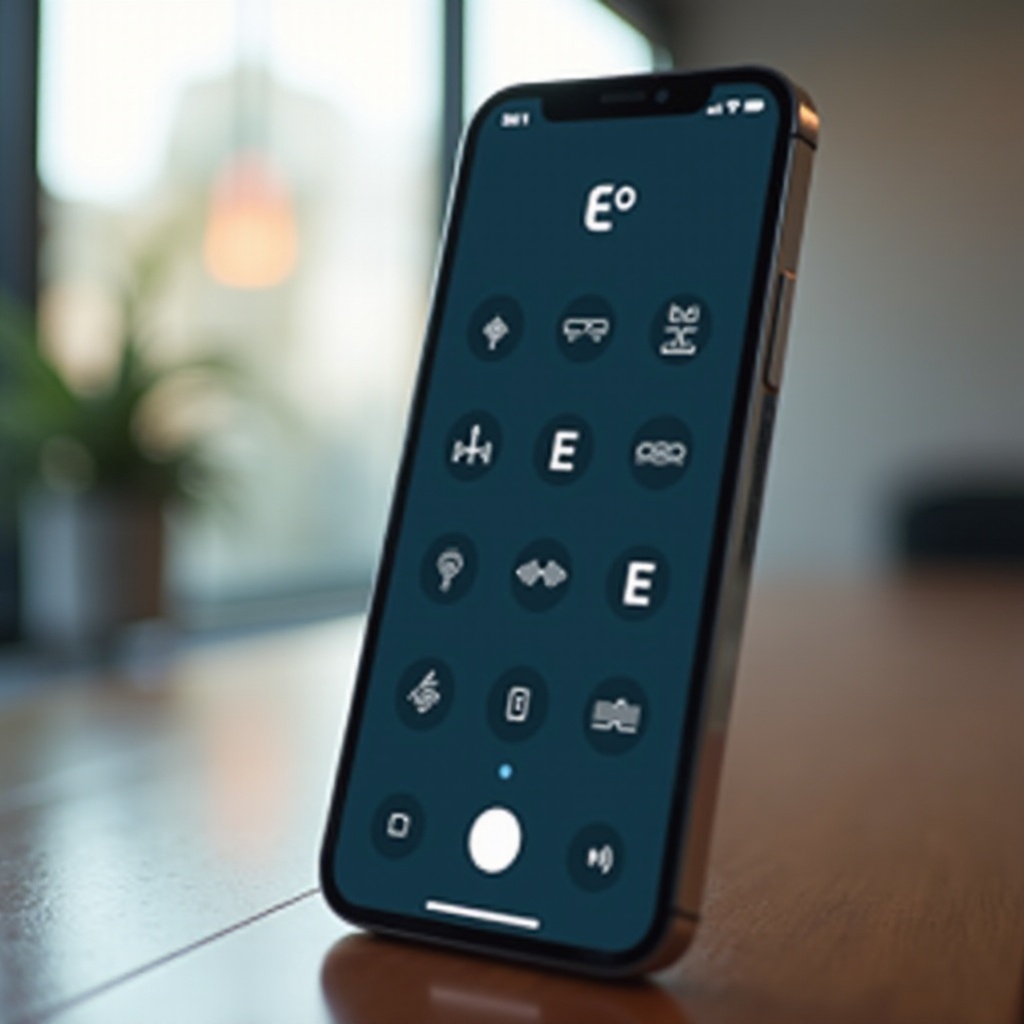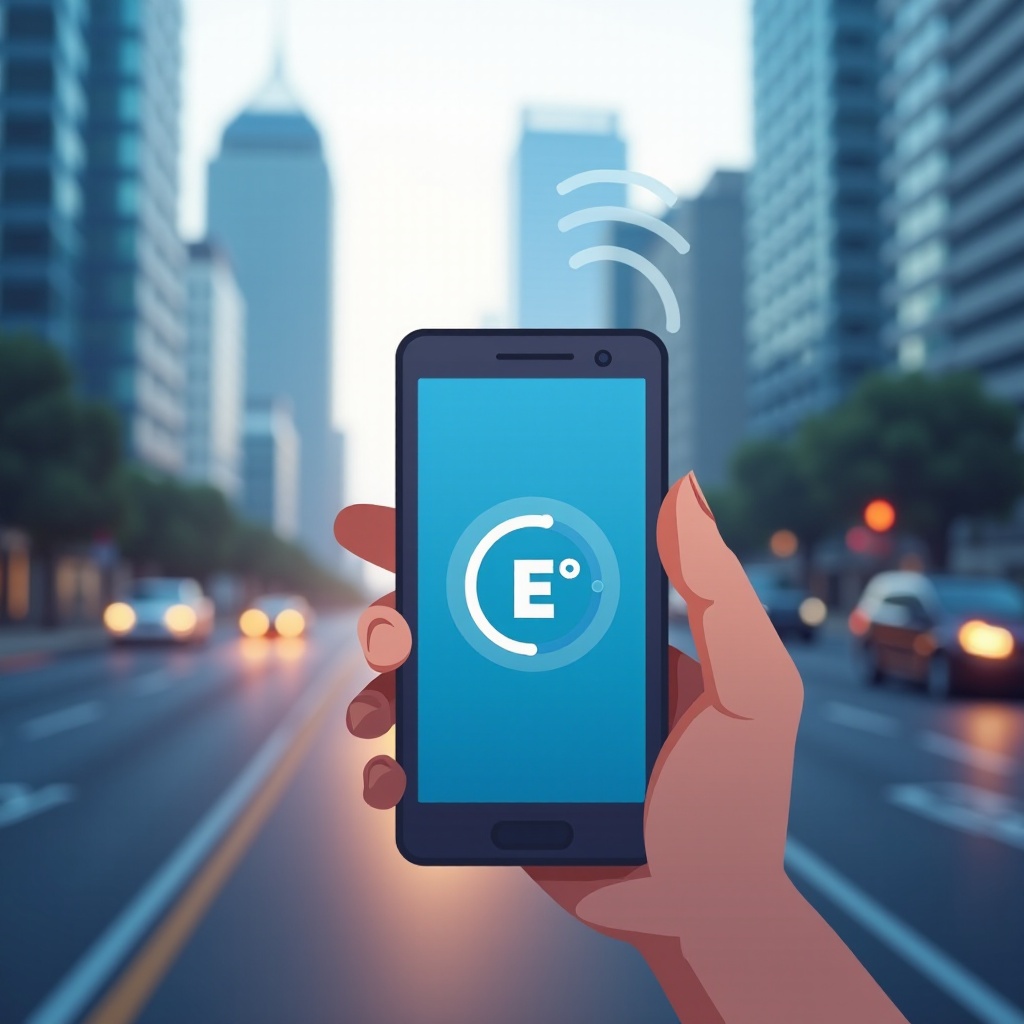Introduction
You’ve probably spotted an ‘E’ on your phone’s signal bar, pondering its significance. For many, this symbol can cause a moment of bewilderment, especially when you’re accustomed to seeing 4G or 5G instead. Mobile network symbols are key to understanding how your phone connects to the internet. The ‘E,’ which signifies the EDGE network, represents a slower connection that’s often unexpected in today’s high-speed internet world. This article aims to decode the ‘E’ symbol, understand its ramifications on your data experience, and transition toward faster connectivity options.

Deciphering the ‘E’ Symbol
The ‘E’ stands for Enhanced Data rates for GSM Evolution, commonly referred to as EDGE, fitting snugly between 2G and 3G technologies. While once revolutionary, offering speeds up to 384 kbps, it now lags behind modern networks. EDGE was initially praised for providing enhanced mobile data speeds, transforming basic online activities. However, in the context of today’s digital demands—streaming, social media, and more—it falls short, making it essential for users to recognize when this symbol appears and adjust expectations accordingly.
The Technical Background of ‘E
EDGE emerged as a significant upgrade in the early 2000s, aimed at bolstering GSM network speeds without necessitating comprehensive infrastructure overhaul. It employs 8 Phase Shift Keying (8PSK) for data modulation, improving the legacy GPRS speed. This was a strategic move during its release, favoring cost-effectiveness while enhancing data transmission. However, understanding the evolutionary step EDGE represents clarifies why its performance pales when contrasted with contemporary 3G, 4G, and 5G technologies, helping users grasp why this icon might suddenly surface during specific instances.
When and Why ‘E’ Appears on Your Phone
Smartphones, despite their advanced capabilities, rely heavily on external factors as well as their internal setup for connectivity, sometimes resulting in the ‘E’ symbol appearing.
Environmental Factors
- Location: Remote areas typically offer limited network options, often reverting to 2G or EDGE due to lack of infrastructure.
- Signal Interference: Physical barriers—buildings, vegetation, or electrical interference—can impede stronger signals, triggering a fallback to EDGE.
- Network Congestion: High user density scenarios jam the data lanes, redirecting phones to EDGE when higher bandwidths are unavailable.
Device-Specific Causes
- Phone Settings: Inappropriate network settings or software errors can restrict your device to EDGE.
- Firmware Limitations: Devices lacking software support for newer bands may max out at EDGE.
- SIM Card Compatibility: Older SIM cards might limit network access unless carrier updates are made.

Impact of ‘E’ on Data Speed and Phone Usage
Recognizing the effects of being on EDGE is pivotal:
- Slower Speeds: Transitioning from 3G/4G to EDGE results in significantly reduced browsing speeds.
- Streaming Difficulties: Content streaming is strenuous, with consistent buffering interrupting media play.
- Extended App Updates: Expect delays in downloading updates or sending media.
- Increased Battery Drain: Devices exert more effort to catch signals, shortening battery life.
Understanding these limitations arms you with strategies to optimize your mobile usage when higher speeds are inaccessible. Planning your usage around areas with stronger network capabilities can mitigate these hindrances.
Comparing ‘E’ with Other Network Symbols
Comparison with advanced networks sheds light on EDGE’s limitations:
‘E’ vs. 4G
4G revolutionized mobile data, enabling high-speed connections up to 100 Mbps, facilitating smooth multimedia streaming and fast downloads, a substantial leap from EDGE.
‘E’ vs. LTE
LTE is another significant step forward, bridging between 3G and full 4G, offering robust speeds and reduced latency, making EDGE seem antiquated by comparison.
‘E’ vs. 5G
5G ushers in a new era with its over 1Gbps speed capability, negligible latency, and support for emerging tech like VR and IoT, marking a stark evolution from the constraints of EDGE.
Tips to Transition from ‘E’ to Faster Networks
To move past the limitations of EDGE:
Adjusting Phone Settings
- Set your device to automatically switch to the quickest available network.
- Rebooting the device can help reset network connections and enhance performance.
Enhancing Network Reception
- Position yourself in areas with better signal penetration, such as near windows or outside.
- Complement your data usage with nearby Wi-Fi networks to alleviate demand on slower mobile connections.
Upgrade Options
- Consult your network provider to upgrade your SIM for access to faster speeds.
- Consider updating to a newer phone model that supports the latest network technologies.

Conclusion
Deciphering the ‘E’ symbol on your phone gives you insights into managing your mobile data efficiently. Although EDGE represented progress at its advent, modern advancements offer compelling reasons to seek out faster networks. By maintaining updated devices and network settings, you can ensure your mobile experience keeps up with today’s digital demands.
Frequently Asked Questions
What does the ‘E’ symbol stand for?
The ‘E’ symbol represents EDGE, which is a 2.5G network enhancing GSM data rates.
Does ‘E’ affect my phone’s battery life?
Yes, operating on ‘E’ can lead to faster battery depletion as the phone strives to maintain a stable connection.
Can I improve my data speed while on ‘E’?
Though challenging on ‘E’, improvements can be made by switching to Wi-Fi, adjusting phone settings, or relocating to better signal areas.
